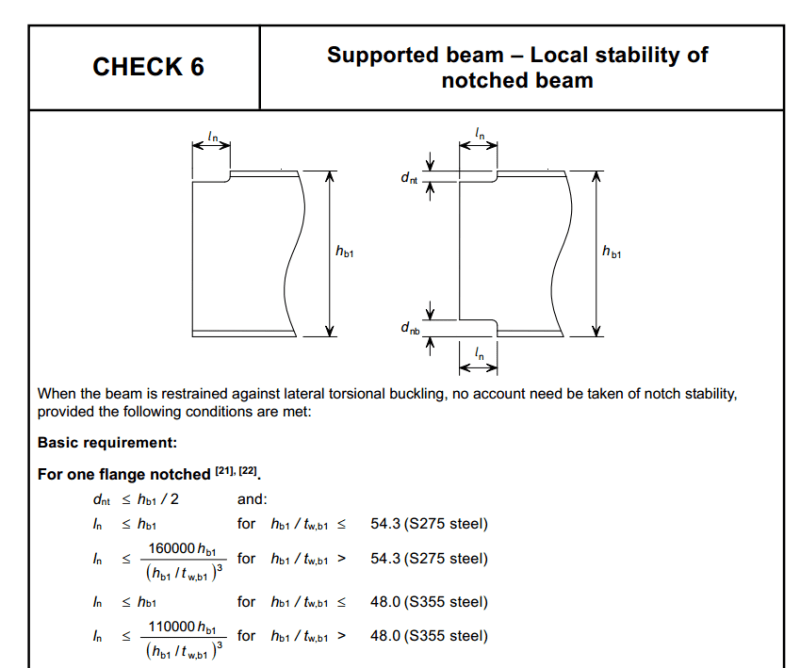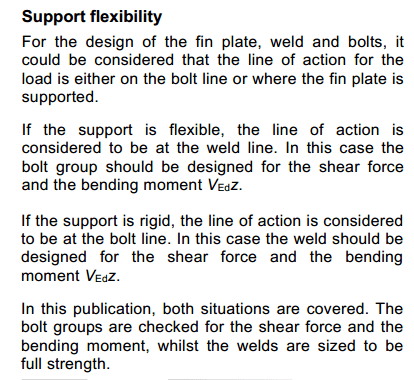Hello,
Hope I will have good interaction with the experts here.
Please do share your opinion about the following query;
I am designing the fin plate connection manually,
1) How do you calculate the eccentricity "z" of connection, when the fin plate is welded to web as well as to flanges of the supporting beam.
SCI P358 dont have guidance for this case.
As per the AISC design manual, this welds dont provide enough torsional restraint so it is better to consider z as dist from web of supporting beam to 1st bolt line (for single bolt line).
Does anyone know the rigorous method which gives exact z for this case.
2) For connection using short fin with one bolt line and notched beam, if the bolt line coincides with the notch of flange
is it necessary to check the overall stability of beam for lateral torsional buckling assuming the beam is unrestrained.
3)If the supported beam is channel section, does any one know the guidance in such cases.
Since the channel is unsymmetrical, on which side do you recommend to place the fin plate
a) At the back of channel
b)from inside the channel (within the flanges)
I think, it should be near to the shear center of channel i.e., at the back of channel.
4) In SCI P358, the bearing resistance of fin plate is the resultant of vertical & horizontal bearing resistance.
Why is it so?
Does it mean the shear force can be in any direction (i.e., need not to be in vertical direction only)?
5) For an application, we want to mount one equipment on the beams using bolts.
so for this bolting is it necessary to follow the end & edge distance criterias given in the table 3.3 of EN 1993-1-8.
Regards,
GD_P
Hope I will have good interaction with the experts here.
Please do share your opinion about the following query;
I am designing the fin plate connection manually,
1) How do you calculate the eccentricity "z" of connection, when the fin plate is welded to web as well as to flanges of the supporting beam.
SCI P358 dont have guidance for this case.
As per the AISC design manual, this welds dont provide enough torsional restraint so it is better to consider z as dist from web of supporting beam to 1st bolt line (for single bolt line).
Does anyone know the rigorous method which gives exact z for this case.
2) For connection using short fin with one bolt line and notched beam, if the bolt line coincides with the notch of flange
is it necessary to check the overall stability of beam for lateral torsional buckling assuming the beam is unrestrained.
3)If the supported beam is channel section, does any one know the guidance in such cases.
Since the channel is unsymmetrical, on which side do you recommend to place the fin plate
a) At the back of channel
b)from inside the channel (within the flanges)
I think, it should be near to the shear center of channel i.e., at the back of channel.
4) In SCI P358, the bearing resistance of fin plate is the resultant of vertical & horizontal bearing resistance.
Why is it so?
Does it mean the shear force can be in any direction (i.e., need not to be in vertical direction only)?
5) For an application, we want to mount one equipment on the beams using bolts.
so for this bolting is it necessary to follow the end & edge distance criterias given in the table 3.3 of EN 1993-1-8.
Regards,
GD_P



